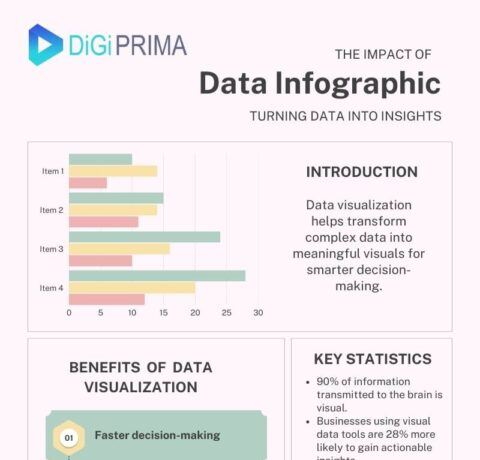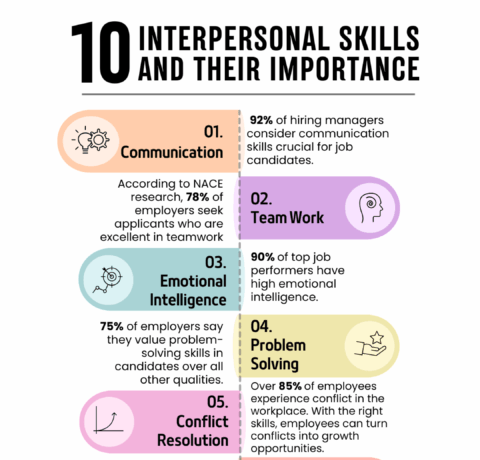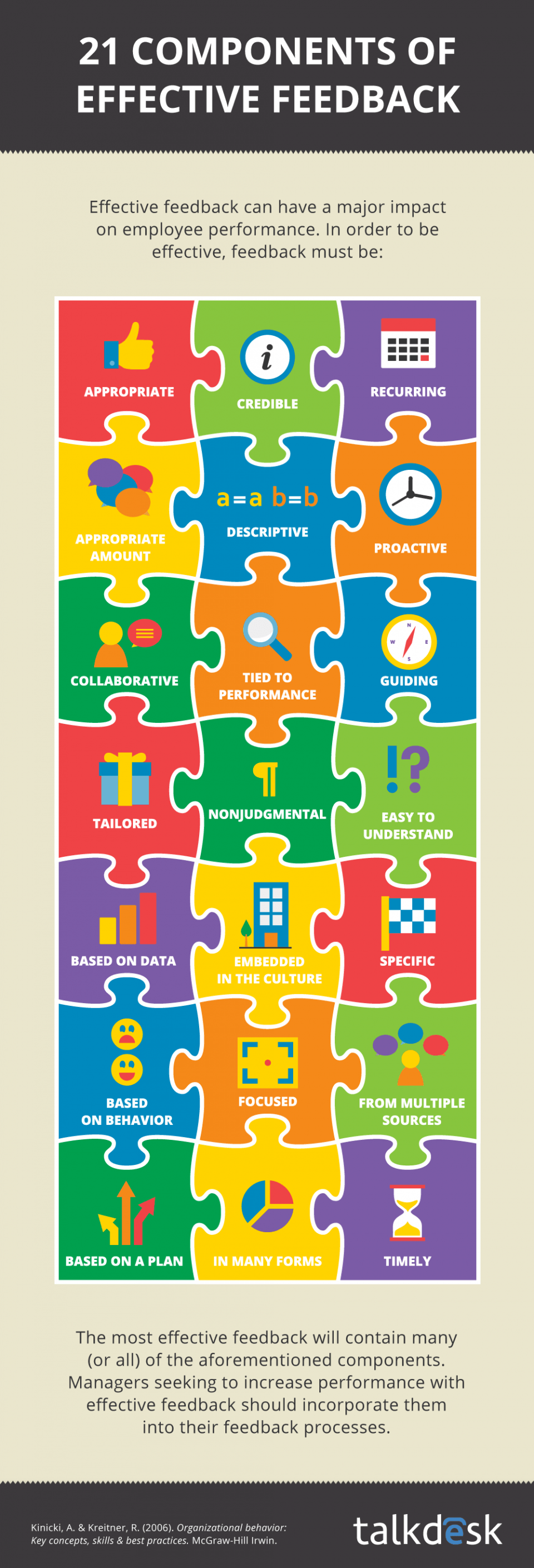21 Components of Effective Feedback Infographic
Providing effective feedback is an intricate process that requires skill, practice and graceful execution. If executed properly, effective feedback can have a major impact on the efficiency of the workplace, employee engagement and the bottom line. The 21 Components of Effective Feedback Infographic will help managers develop a comprehensive understanding of what constitutes effective feedback in order for feedback to have the most impact on employees.
In order to be effective, feedback must be:
1. Specific
Feedback must be concrete and relate to a specific, measureable performance goal. It should also include clear expectations for the employee and their performance.
2. Timely
Employees must receive the feedback as close to the event as possible.
3. Appropriate
Feedback should be presented in a positive, tactful and non-threatening manner.
4. Focus on behavior, not personality
Always provide feedback that is based on behavior, not the employees personality or characteristics unless absolutely necessary.
5. Proactive
Don’t delay or avoid providing feedback. Identify issues and provide feedback before they become problems or have a large impact on the company.
6. Given using descriptive language
Describing how the employee’s behavior impacts performance will help facilitate understanding. In addition, it will focus the discussion on behavior rather than personal characteristics.
7. Not given using judgmental language
Avoiding judgmental language will decrease the possibility that the employee will be defensive. It will also increase the likelihood that the feedback is objective and based on facts or observable behavior.
8. Based on accurate and credible information
The feedback should be based on accurate information. Never use rumors as examples.
9. Recurring
Feedback should be recurring. Schedule performance reviews each month and ensure that managers deliver informal feedback daily.
10. Embedded in the Culture
Foster an environment of continuous feedback and professional development.
11. Focused
Feedback should be channeled toward key result areas. Feedback should also be linked to corporate or departmental goals.
12. Guiding
The information given to the employee should be used to either confirm or correct their performance. A simple, “good job” is not sufficient. It must be specific and guide the employee in the most desired direction.
13. Tied to an action plan
When providing feedback, managers should also give specific direction to the employee. The employee should know exactly how to increase their performance and what steps they need to take to get there.
14. An appropriate amount
Too much feedback will overwhelm and confuse the employee. Too little feedback is not sufficient to elicit a change.
15. From multiple sources
In order to internalize the feedback and elicit change, employees should receive feedback from multiple sources such as customers, co-workers (peers and subordinates), managers, upper management and objective measures.
16. In many forms
Graphs and charts that track individual and group performance are imperative to the feedback process in the workplace. Feedback should also be qualitative, such as excerpts from customer surveys, and direct such as real-time management feedback.
17. From data
Quantitative measures of performance such as units sold, days absent, money saved, projects completed and customers satisfied are imperative to the feedback process. This data should be presented in a meaningful way and should be used as concrete examples.
18. Tailored to the recipient
The individual’s characteristics, level of performance and cognitive processing style should influence the type of feedback they receive.
19. Easy to understand
Feedback should be easy to understand and the employee should repeat back the information discussed.
20. Specific to the employee’s performance
Managers should not include factors that are beyond the control of the employee in the feedback process.
21. Collaborative
Allowing the employee to contribute to the feedback process and offer solutions will help them accept the feedback more readily.
The most effective feedback will contain many (or all) of the aforementioned components. Managers seeking to increase performance with effective feedback should incorporate them into their feedback processes.







You can adjust your cookie preferences here.